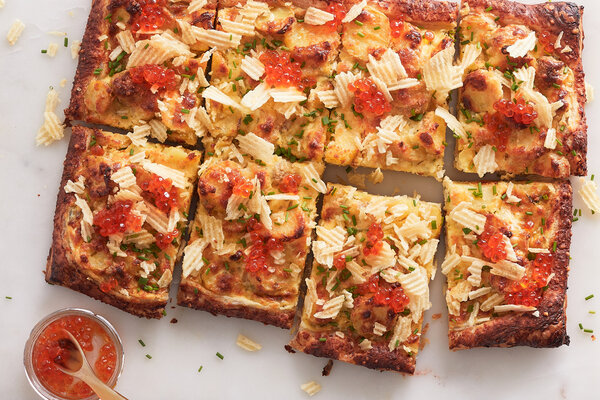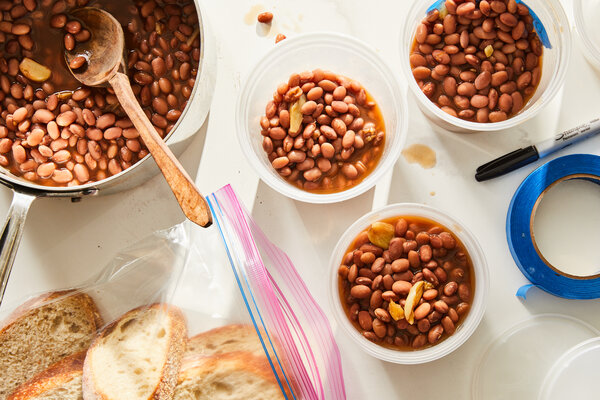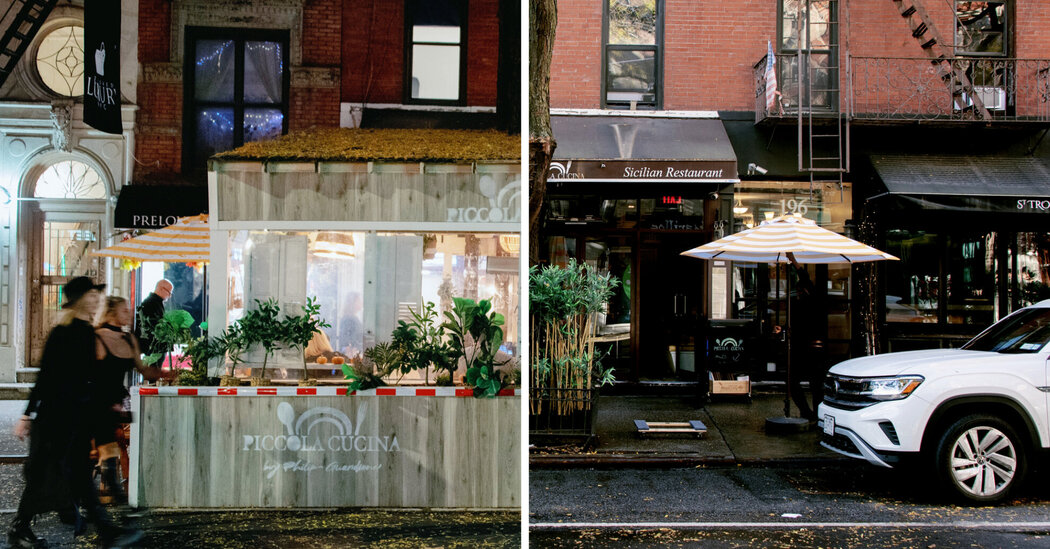The New York-based private chef Yann Nury has a simple strategy for transforming unadorned produce into showstopping canapés. “It’s all about finding the most unique vegetable,” says the 40-year-old Frenchman, “and making it a star.” At the events he caters for clients, shiny orange Sungold tomatoes masquerade as gumballs in Austrian crystal candy dishes; vivid green sugar snap peas fill sterling silver punch bowls; and perfectly polished radishes, cucumbers and petite carrots are presented atop toasted rye crumbs arranged to resemble the garden soil in which they were grown.
Nury, who worked for the chef Daniel Boulud before striking out on his own a decade ago, is part of a roster of chefs elevating the concept of crudités. Inspired by the glut of rare and heirloom produce varieties now accessible globally — and motivated by an increased demand for plant-based food and Instagram-worthy presentation — they’re treating raw vegetables, once mere vehicles for dip, with a reverence formerly reserved for caviar or oysters. At a party in Milan for the design company Flos, Zélikha Dinga, the chef and owner of the catering company Caro Diario, served a giant platter of Kalamata and Castelvetrano olives surrounded by a snaking border of cherry tomatoes, a few of which were wrapped in gold foil like bonbons. In Paris, Charlotte Sitbon and Sayaka Kaneko — who run the culinary production studio Balbosté — have taught workshops in mukimono, the Japanese art of vegetable carving. At their events for fashion brands like Loewe and Chanel, there are carrots sculpted into tiny nautilus shells, pickled daikon sliced into scalloped flowers and mini-zucchinis engraved with intricate patterns. And at Casa Lawa, a guesthouse near Mount Etna in Sicily, the owners Lukas Lewandowski, 35, and his husband, Merijn Gillis, 50, create outdoor crudités tables for almost every party and special dinner. Lewandowski, a chef who moved there from Amsterdam in 2022, arranges vegetables from the local farmers’ market and their property’s 10-acre garden — tomatoes, treviso radicchio, haricots verts, scallions — directly onto white tablecloths to kaleidoscopic effect. “People gather around, engage in conversation and eat with their hands,” he says. “Each time we make a table, it feels like painting a new canvas.”
James Beard, the American chef and food writer, is credited with bringing crudités — as the French term raw or cured vegetables served as a premeal bite — to the United States by way of his cookbooks, starting with his 1940 debut, “Hors d’Oeuvres and Canapés.” But the custom of serving fresh produce to kick off lunch or dinner has been around for centuries, appearing in almost every culinary tradition. “In Lebanon, restaurants will start you out with a couple of cucumbers, a whole onion, a tomato, maybe some dill and a knife. It’s a lovely and tactile entry point into a meal,” says the British-born, Brooklyn-based chef Clare de Boer, 34, who serves simple plates of lightly pickled, in-season produce from nearby farms as a welcome treat at Stissing House, her restaurant in Pine Plains, N.Y. “I love that unfussed-over simplicity,” says de Boer, who co-owns the restaurants Jupiter and King in Manhattan. “That’s exactly how I want to eat my vegetables.”
Skye Gyngell, the chef and owner of Spring in London, also offers dishes of unadulterated vegetables, including one with six different varieties of radish and another with three types of cucumber served alongside cucumber melons. “We’ll send these plates out as a little ‘hi’ to people when they arrive,” says Gyngell, 61, who drew inspiration from classic restaurants like La Colombe D’Or in Provence, where raw vegetable snacks have greeted diners for decades. “The difference today is that we have so many more varieties of vegetables to choose from,” she says. Gyngell credits this shift to produce suppliers like the U.K.-based Natoora, which connects chefs with small-scale organic farms around the world, and purveyors like Baker’s Creek Rare Seed Company in Missouri, which sells more than a thousand heirloom varietals. For her part, Gyngell has had an exclusive relationship with Jane Scotter of Fern Verrow Farm in Herefordshire, England, for the past decade. Before the fall and spring planting seasons, the two work together to choose what they want to grow; the process has become a semiannual highlight for the chef. “Looking through seed catalogs that have vegetables in all colors of the rainbow,” she says, “is like shopping at the loveliest sweets shop imaginable.”
Set design by Leilin Lopez-Toledo. Photo assistant: Omer Kaplan. Set designer’s assistant: Joseph McCagherty. Floral assistant: Tate Obayashi







